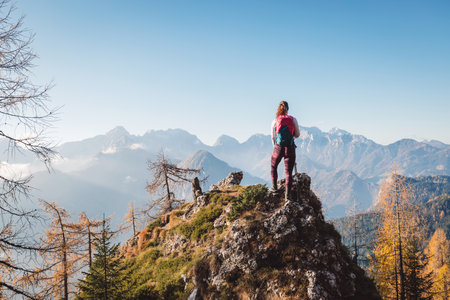Introduction to Jungles of Central India
Nestled in the very heartland of India, the jungles of Madhya Pradesh and its neighbouring regions offer a captivating blend of natures untouched beauty and rich biodiversity. Here, dense teak and sal forests stretch as far as the eye can see, interwoven with bamboo groves and peppered with vibrant wildflowers after every monsoon. This central Indian landscape, immortalised in classic tales such as Rudyard Kipling’s “The Jungle Book,” is home to some of the country’s most iconic wildlife – from elusive Bengal tigers and majestic leopards to playful langurs, sambar deer, and a dazzling array of birdlife. The unique topography, featuring rolling hills, sparkling rivers like the Narmada, and ancient plateaus, creates not only a dramatic backdrop for trekking but also provides vital habitats for countless species found nowhere else in the world. Whether you are an Indian explorer seeking to reconnect with your roots or an international traveller eager to experience India beyond its cities, trekking through these wild expanses offers an intimate glimpse into the soul of Bharat. Each step taken along these jungle trails reveals centuries-old trees, mysterious ruins overtaken by vines, and the harmonious rhythm of life that thrives away from urban chaos. It is this blend of awe-inspiring flora, charismatic fauna, and enchanting landscapes that makes trekking in central India truly special—a journey that promises both adventure and deep connection with nature.
Essential Preparation: Local Guidelines and Safety Advice
Trekking in the heart of Central India’s jungles is a unique adventure that requires careful preparation to ensure both personal safety and respect for local culture. Before setting out, trekkers must familiarize themselves with essential governmental and forest department regulations, acquire all necessary permits, and embrace local cultural practices. Ignoring these guidelines may lead to fines, denied entry, or even dangerous encounters with wildlife.
Governmental and Forest Department Regulations
Central Indian forests are protected areas governed by strict rules to conserve biodiversity. All visitors must secure valid entry permits from the respective State Forest Departments—such as those for Kanha, Pench, or Satpura reserves. Group sizes are often limited to minimize environmental impact, and hiring a licensed local guide is mandatory in most regions.
| Requirement | Description | Responsible Authority |
|---|---|---|
| Entry Permit | Mandatory for entry into protected forest zones; specify trekking route and duration | State Forest Department |
| Licensed Guide | Engagement of a trained local guide is compulsory for safety and navigation | Forest Department/Registered Agencies |
| Wildlife Code of Conduct | No feeding animals; maintain silence; keep distance from wildlife; no littering | Forest Department/Local Panchayat |
| Trek Timings | Trekking allowed only during daylight hours; night entry strictly prohibited | Forest Department/Range Office |
Cultural Practices: Respecting Local Traditions
The central Indian jungles are home not only to diverse wildlife but also to tribal communities such as the Gond, Baiga, and Korku. Respect their customs by seeking permission before entering village lands, avoiding photography without consent, and dressing modestly. Many local communities view the jungle as sacred; refrain from loud noises or disruptive behavior near their shrines or gathering places.
Must-Follow Etiquette During Your Trek:
- Greetings: Use simple salutations like “Namaste” or “Ram Ram.” Avoid intrusive questions about traditions unless invited.
- Language: While Hindi is widely spoken, learning basic words in the regional dialect shows respect.
- Eco-consciousness: Leave no trace—carry reusable water bottles and dispose of waste responsibly.
- Sacred Spaces: Do not enter marked sacred groves or temples without explicit invitation from community elders.
Practical Local Safety Advice Rooted in Experience
Central India’s jungles are home to tigers, leopards, sloth bears, and elephants. Always walk in groups and remain on designated trails. Avoid trekking during monsoon months (June-September) due to slippery paths and increased animal movement. Keep emergency contact numbers handy—each reserve has its own rapid response team for human-wildlife conflict situations. Inform your guide or forest ranger about any allergies or medical conditions before starting the trek.
Quick Safety Checklist:
- Wear neutral-colored clothing to blend into the environment.
- Avoid strong perfumes or deodorants that might attract insects or disturb animals.
- Carry a basic first-aid kit with anti-venom (for snake bites), antiseptic cream, pain relievers, and oral rehydration salts.
- If you encounter wildlife, remain calm—do not run or make sudden movements; follow your guide’s instructions precisely.
- Ensure your mobile phone is fully charged but keep it on silent mode during the trek.
By adhering strictly to these cultural norms and regulatory guidelines, you not only protect yourself but also contribute positively towards preserving Central India’s rich natural heritage for generations to come.

3. Trekking Routes and Seasonal Tips
Central India’s jungles offer a rich tapestry of trekking routes, each with its own unique charm and challenges. Whether you are looking for popular trails or seeking more offbeat paths, understanding the nuances of each season is crucial to a rewarding and safe trekking experience.
Popular Trails in Central India
The Satpura Range is home to well-trodden routes such as the Pachmarhi Biosphere Reserve trek, renowned for its lush landscapes and cascading waterfalls. Kanha National Park also boasts scenic trails that wind through bamboo forests and grasslands, offering opportunities to spot wildlife like deer, gaur, and the elusive tiger. These areas are equipped with basic facilities and guided tour options, making them suitable for both beginners and experienced trekkers.
Offbeat Jungle Treks
For those seeking solitude and a closer connection to nature, lesser-known trails near Pench Tiger Reserve or the rocky terrains of Amarkantak present thrilling alternatives. Local guides often recommend these routes for their untouched beauty and rare flora, but caution is advised as paths can be narrow and wildlife sightings unpredictable. Hiring a local guide is not just wise—it’s essential for safety.
Best Times to Visit: Monsoon, Winter, and Summer
Monsoon (June–September)
The monsoon transforms the jungles into a verdant paradise, with streams flowing at full strength and vegetation at its peak. However, heavy rains can make trails slippery and prone to leeches. Many parks restrict access during this period for visitor safety. If you plan to trek in the monsoon, use anti-leech socks and waterproof gear, as recommended by seasoned local trekkers.
Winter (October–February)
This is widely considered the best season for jungle trekking in Central India. The weather is cool and pleasant, visibility is high, and animal activity increases around water sources. Popular festivals like Diwali also fall in this season—adding cultural vibrancy to your adventure. Do carry warm clothing, especially for early mornings or overnight camps.
Summer (March–May)
While daytime temperatures can soar above 40°C, summer has its own rewards. Wildlife congregates at dwindling waterholes, increasing chances of sightings on certain trails. Begin treks early to avoid midday heat and hydrate regularly—local advice always stresses carrying ORS packets and light cotton wear for sun protection.
Pointers from Local Trekkers
Always inform someone about your route before setting out. Stick to marked trails whenever possible; Central Indian jungles are dense, making it easy to lose your way. Respect local customs—remove shoes when entering sacred groves or temples along the trail—and never disturb wildlife. By planning your trek according to the season and heeding tips from experienced guides, you ensure both an adventurous and culturally enriching journey through the heart of India’s wild lands.
4. Wildlife Encounters: What to Expect
Trekking in the heart of Central India’s jungles offers a once-in-a-lifetime opportunity to witness some of the country’s most iconic wildlife species in their natural habitat. This region, known for its rich biodiversity, is home to majestic tigers, elusive leopards, sturdy gaurs (Indian bison), herds of deer, and an astonishing variety of birdlife. Understanding what to expect—and how to behave—will ensure a memorable and respectful wildlife experience.
Signature Wildlife You Might Encounter
| Animal | Common Locations | Key Behaviours |
|---|---|---|
| Tiger (Panthera tigris) | Kanha, Bandhavgarh, Pench reserves | Often seen near water sources at dawn/dusk; solitary and elusive |
| Leopard (Panthera pardus) | Pench, Satpura forests | Prefers dense foliage; excellent climber; more active at night |
| Gaur (Bos gaurus) | Kanha, Satpura ranges | Largest wild cattle; moves in small herds; usually peaceful but powerful |
| Spotted Deer (Chital) | Throughout central Indian jungles | Forms large groups; often seen grazing in open clearings |
| Birdlife (Hornbills, Peafowl, Raptors) | Across all major parks and reserves | Active during early morning and late afternoon; listen for distinct calls |
Indian Etiquette for Wildlife Observation
Respectful observation is crucial:
- No loud noises: Keep voices low or remain silent to avoid disturbing animals.
- No sudden movements: Move slowly and deliberately when spotting wildlife.
- No feeding or touching: Never attempt to feed or touch wild animals—it can be dangerous and disrupts their natural behaviour.
- Follow your guide’s instructions: Local guides are experienced in reading animal behaviour and ensuring safety.
- No littering: Always carry back your waste—‘Leave No Trace’ is a respected principle in Indian eco-tourism.
- No flash photography: Flash can startle animals and disturb their routines.
The Importance of Conservation Awareness
Trekking through Central India’s jungles is not only about adventure but also about learning the importance of conservation. Many signature species, especially tigers and leopards, face ongoing threats from poaching and habitat loss. By observing wildlife with care and spreading awareness among fellow trekkers, you become a part of India’s conservation movement. Respect local customs by greeting forest staff politely (a simple “Namaste” goes a long way), supporting eco-friendly lodges, and sharing your experiences responsibly on social media—always highlighting the need for protecting these precious habitats for generations to come.
5. Community Insights and Responsible Trekking
Trekking through the dense jungles of central India offers more than just an encounter with wildlife; it provides a unique opportunity to learn from the ancient wisdom of local tribal communities. These indigenous groups, such as the Gonds and Baigas, have lived in harmony with nature for generations. Their deep understanding of forest life, medicinal plants, and animal behaviour is an invaluable resource for trekkers seeking both adventure and knowledge. Respecting their traditions and seeking their guidance not only ensures your safety but also enriches your trekking experience.
Eco-Sensitive Behaviour: Blending Tradition with Modern Awareness
Responsible trekking in India’s heartland means adopting eco-sensitive practices inspired by local customs. The principle of ‘Atithi Devo Bhava’—Guest is God—is deeply rooted in Indian hospitality. As visitors to the jungle, we must treat the land and its people with utmost respect. This includes minimising noise, avoiding littering, and not disturbing wildlife or habitats. By following marked trails and refraining from plucking plants or feeding animals, trekkers help preserve the ecosystem for future generations.
Learning from Tribal Communities
The tribal guides often share stories that reflect their spiritual connection to the jungle. They teach simple yet effective ways to coexist with wildlife: maintaining safe distances from animals, recognising warning signs in nature, and using natural resources sustainably. Listening to these teachings fosters a sense of responsibility towards the environment and cultivates gratitude for the privilege of experiencing such pristine wilderness.
Environmentally Friendly Trekking Practices
Adopt small but impactful habits on your trek: carry reusable water bottles, avoid single-use plastics, and pack out all waste. Use biodegradable soaps if you need to wash, and prefer local food prepared by tribal communities to support sustainable livelihoods. These actions reflect both Indian values and global best practices in eco-tourism. Remember, by treading lightly on these sacred lands, you are contributing to the protection of India’s natural heritage while honouring the communities who call it home.
6. Essential Packing List for Central Indian Treks
Clothing and Footwear for the Jungle
Select lightweight, breathable clothing in earthy or muted colours like olive green, brown, or khaki to blend with the forest environment. Long-sleeved shirts and full-length trousers protect against thorny bushes, insects, and sun exposure. A sturdy pair of trekking shoes with good grip is a must for uneven terrain. Don’t forget a wide-brimmed hat or cap to shield yourself from the intense Central Indian sun.
Permits and Documentation
Entry into most wildlife reserves and national parks in Madhya Pradesh and Chhattisgarh requires prior permits. Carry printed copies of your permit, valid government ID (such as Aadhaar card or PAN card), and any advance bookings for guides or safaris. Double-check park regulations as these can change seasonally.
First Aid and Health Essentials
A compact first aid kit should include antiseptic cream, band-aids, pain relievers, anti-allergy tablets, and any personal medications. Insect repellent containing DEET is crucial to guard against mosquitoes and ticks. Consider carrying ORS sachets to stay hydrated in the humid climate, and sunscreen to prevent sunburns.
Food Choices on the Trail
Opt for easy-to-carry snacks such as roasted chana, dry fruits, energy bars, and poha packets that require minimal preparation. Always carry sufficient bottled water or a reusable filter bottle since potable water sources may not be reliable inside the jungle. Avoid carrying anything with a strong aroma to prevent attracting wildlife.
Dealing with Local Insects, Weather & Terrain
Apply insect repellent before entering the forest areas. Pack a lightweight rain poncho or jacket during monsoon months (June-September) as sudden showers are common. The jungle terrain can be slippery; always check your footing especially near streams or rocky patches. Keep a torch or headlamp handy for early morning or evening treks—power cuts are not uncommon in remote areas.
Pro-Tip: Respect Local Customs & Nature
If trekking near tribal villages, dress modestly and seek permission before taking photographs. Avoid loud noises, littering, or disturbing wildlife—Central India’s jungles are sacred to many local communities and home to diverse species including tigers, leopards, and rare birds.
7. Emergency Response and Support Systems
When trekking through the heart of Central India’s wild jungles, being prepared for emergencies is crucial for your safety and wellbeing. The remote nature of these forests means that quick response is essential, so understanding local support systems and Indian emergency protocols can make all the difference.
Who to Contact in Case of Emergencies
If you encounter any emergency while trekking, immediately contact the nearest forest officials or rangers. Forest guards patrol core and buffer zones of reserves such as Kanha, Pench, or Satpura, and are trained to handle wildlife and visitor emergencies. You can find their numbers at park entrances or ask your guide to provide them before starting your trek. Additionally, save the following essential contacts:
- Forest Department Helpline: 1926 (in many states)
- Local police: 100
- Ambulance services: 108
Always inform your lodge or tour operator about your route and expected return time. They can alert authorities if you do not check-in as scheduled.
Dealing with Wildlife Encounters
- Stay calm and do not run; sudden movements may trigger an animal’s instinct to chase.
- Make yourself visible by standing tall and speaking firmly but gently.
- If confronted by tigers or leopards, maintain eye contact and slowly back away without turning your back.
- For elephants, keep a safe distance; never approach a herd, especially if there are calves.
Local guides are well-versed in traditional methods for diffusing animal encounters—always heed their advice.
If You Get Lost
- Stop moving to avoid getting further off-track.
- Use a whistle or shout periodically—sound travels far in the forest and may alert nearby patrols or trekkers.
- If you have mobile signal, share your GPS location with park authorities or your group using WhatsApp or SMS. In India, Google Maps offline can be a lifesaver.
Health Issues on the Trail
- Carry a basic first-aid kit including antiseptics, bandages, anti-venom kits (for snake-prone areas), and oral rehydration salts.
- If bitten by insects or snakes, remain calm and limit movement. Seek immediate medical attention—do not attempt home remedies.
Remember that Indian jungle trails may be hours from the nearest town; prompt communication is key. Trekking with a registered guide ensures faster access to help if needed.
Your safety is paramount—respect local protocols, keep emergency contacts handy, and trust in the experience of India’s dedicated forest staff to ensure a memorable jungle trekking adventure.


